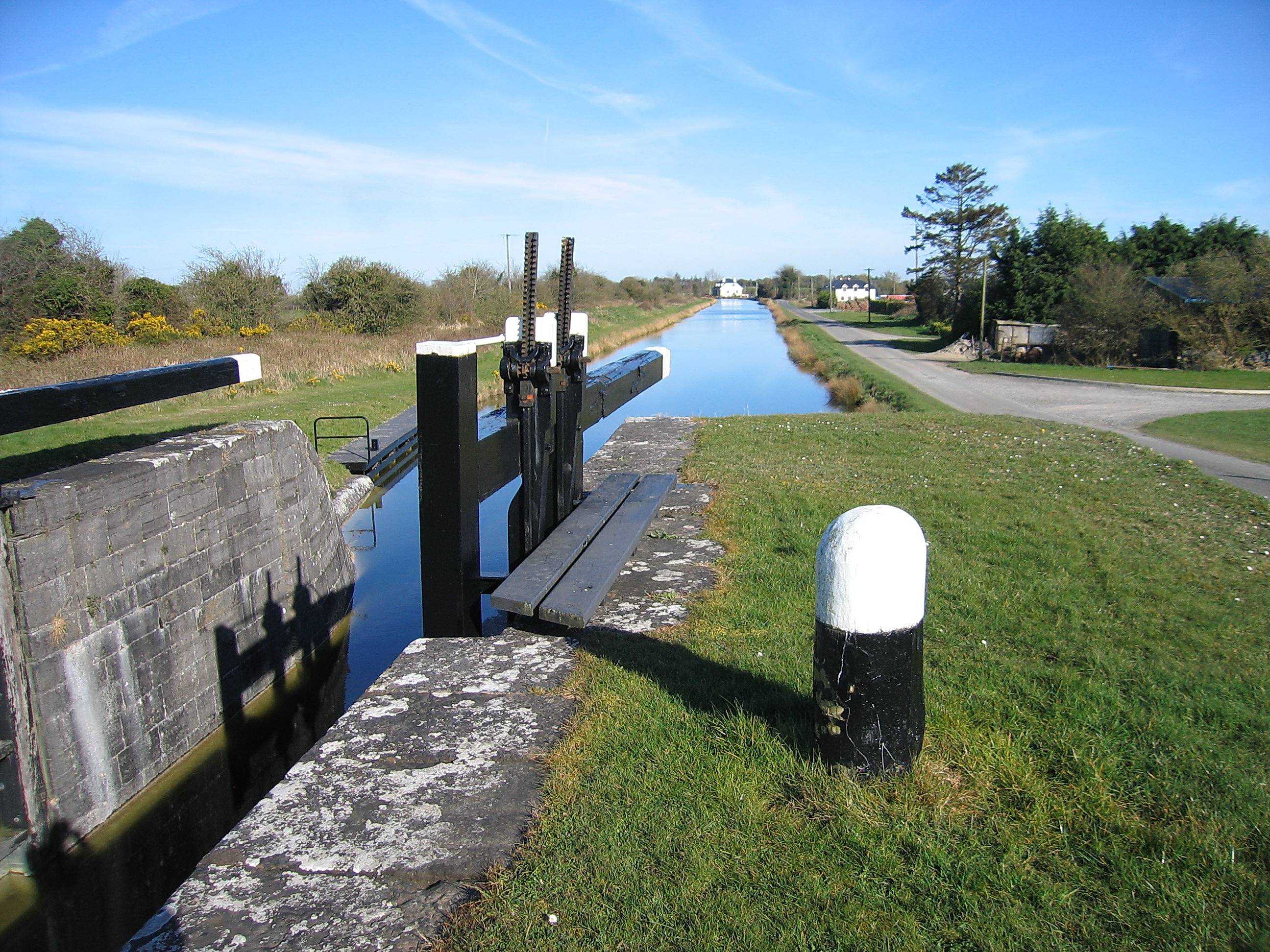|
Hackney Canal
The Hackney Canal was a short canal in Devon, England, that linked the Hackney Clay Cellars to the River Teign. It was privately built by Lord Clifford in 1843, and throughout its life carried ball clay for use in the production of pottery. It closed in 1928, when its function was replaced by road vehicles. History The area to the north of the River Teign, particularly near to Chudleigh Knighton, Kingsteignton and Preston, was an important source of ball clay in the eighteenth and nineteenth centuries. Most of the extraction sites were owned by Lord Clifford, who lived at Ugbrooke House. The clay was taken to Hackney Clay Cellars for drying, and was then transferred to Teignmouth by packhorse, where it was loaded into coasters for delivery to the pottery industry. The situation was far from ideal, particularly as the Teignmouth moorings were tidal, and the high tidal range made loading difficult. In order to improve the situation, Lord Clifford built a canal to link the clay ... [...More Info...] [...Related Items...] OR: [Wikipedia] [Google] [Baidu] |
River Teign
The River Teign is a river in the county of Devon, England. It is long and rises on Dartmoor, becomes an estuary just below Newton Abbot and reaches the English Channel at Teignmouth. Toponymy The river-name ''Teign'' is first attested in an Anglo-Saxon charter of 739, where it appears as ''Teng''. The name is pre-Roman, related to the Welsh meaning 'sprinkling', or 'spread out' and means simply 'stream'. Eilert Ekwall, ''The Concise Oxford Dictionary of English Place-names'', p.462. The river lends its name to several places, including Teigncombe, Drewsteignton, Canonteign, Teigngrace, Kingsteignton (at one time, one of England's largest villages), Bishopsteignton, Teignharvey, and the second largest settlement along its course, Teignmouth. However, the villages of Combeinteignhead and Stokeinteignhead, on the other side of the estuary from Bishopsteignton, are not named after the river. Course The River Teign rises on Dartmoor, as do many other major Devonian r ... [...More Info...] [...Related Items...] OR: [Wikipedia] [Google] [Baidu] |
Brixham
Brixham is a coastal town and civil parish in the borough of Torbay in the county of Devon, in the south-west of England. As of the 2021 census, Brixham had a population of 16,825. It is one of the main three centres of the borough, along with Paignton and Torquay. It is believed that the name Brixham originates from the personal name of an early resident, Brioc, followed by the Old English suffix, ''ham'' meaning home. The town, which is predominantly hilly, is built around a natural harbour, which in addition to leisure craft, provides anchorage for what is now one of England's (but not the UK's) largest remaining commercial fishing fleets. A conspicuous local tourist attraction is the permanently moored replica of Francis Drake, Sir Francis Drake's ship ''Golden Hind''. Historically Brixham was made up of two separate communities connected only by a marshy lane. In Fishtown, in the immediate vicinity of the harbour, as the name suggests, the residents made a living mainly fr ... [...More Info...] [...Related Items...] OR: [Wikipedia] [Google] [Baidu] |
Canals Opened In 1843
Canals or artificial waterways are waterways or river engineering, engineered channel (geography), channels built for drainage management (e.g. flood control and irrigation) or for conveyancing water transport watercraft, vehicles (e.g. water taxi). They carry free, calm surface flow under atmospheric pressure, and can be thought of as artificial rivers. In most cases, a canal has a series of dams and lock (water transport), locks that create reservoirs of low speed current flow. These reservoirs are referred to as ''slack water levels'', often just called ''levels''. A canal can be called a navigation canal when it parallels a natural river and shares part of the latter's discharge (hydrology), discharges and drainage basin, and leverages its resources by building dams and locks to increase and lengthen its stretches of slack water levels while staying in its valley. A canal can cut across a drainage divide atop a ridge, generally requiring an external water source abo ... [...More Info...] [...Related Items...] OR: [Wikipedia] [Google] [Baidu] |
Canals In Devon
Canals or artificial waterways are waterways or engineered channels built for drainage management (e.g. flood control and irrigation) or for conveyancing water transport vehicles (e.g. water taxi). They carry free, calm surface flow under atmospheric pressure, and can be thought of as artificial rivers. In most cases, a canal has a series of dams and locks that create reservoirs of low speed current flow. These reservoirs are referred to as ''slack water levels'', often just called ''levels''. A canal can be called a navigation canal when it parallels a natural river and shares part of the latter's discharges and drainage basin, and leverages its resources by building dams and locks to increase and lengthen its stretches of slack water levels while staying in its valley. A canal can cut across a drainage divide atop a ridge, generally requiring an external water source above the highest elevation. The best-known example of such a canal is the Panama Canal. Many can ... [...More Info...] [...Related Items...] OR: [Wikipedia] [Google] [Baidu] |


